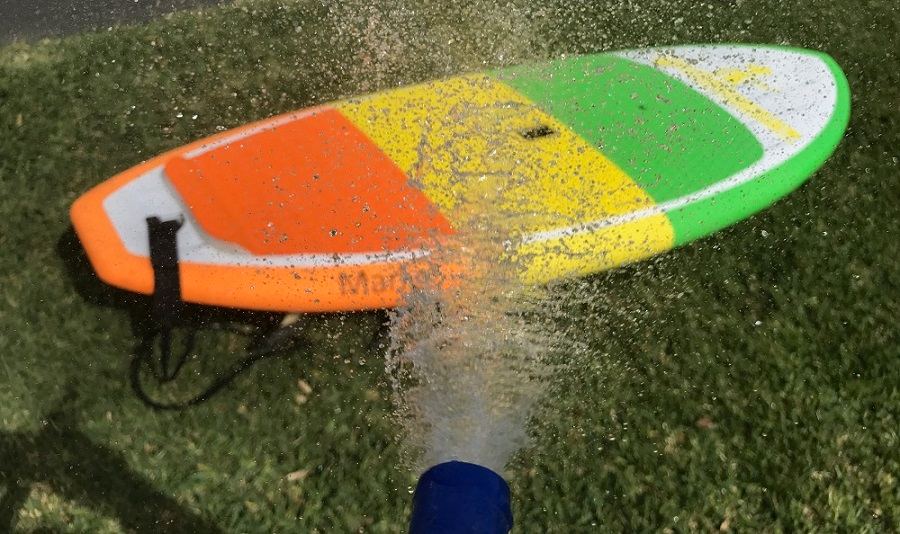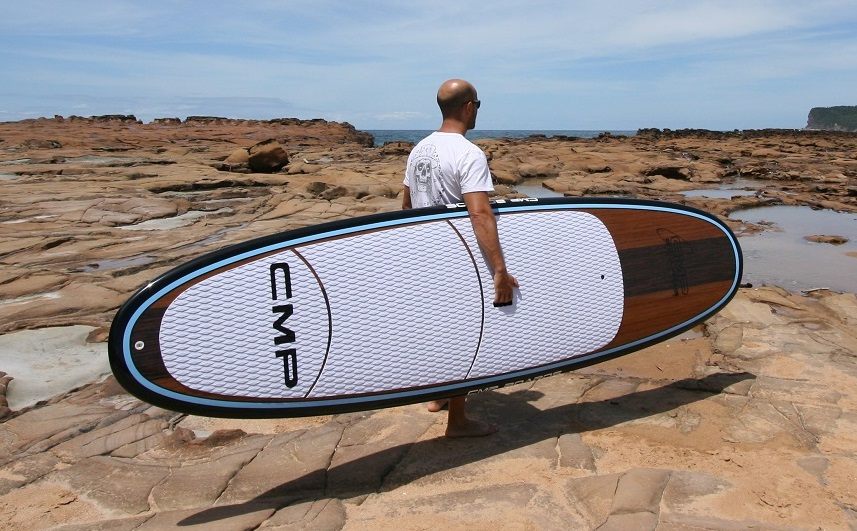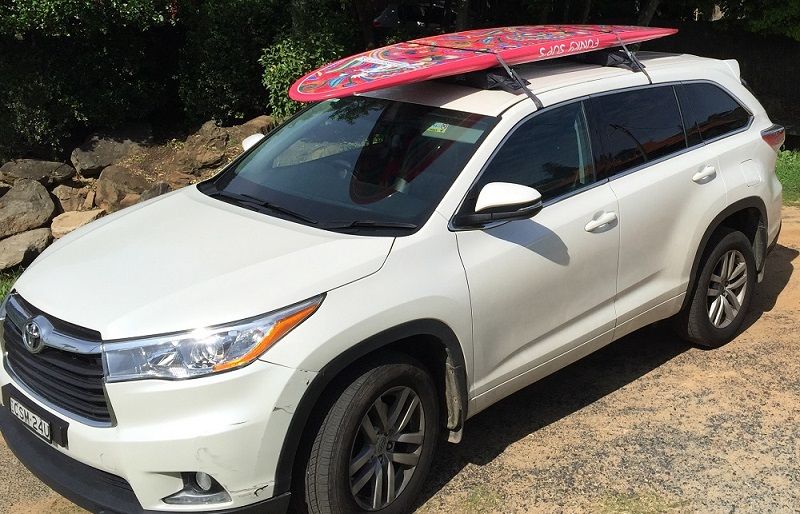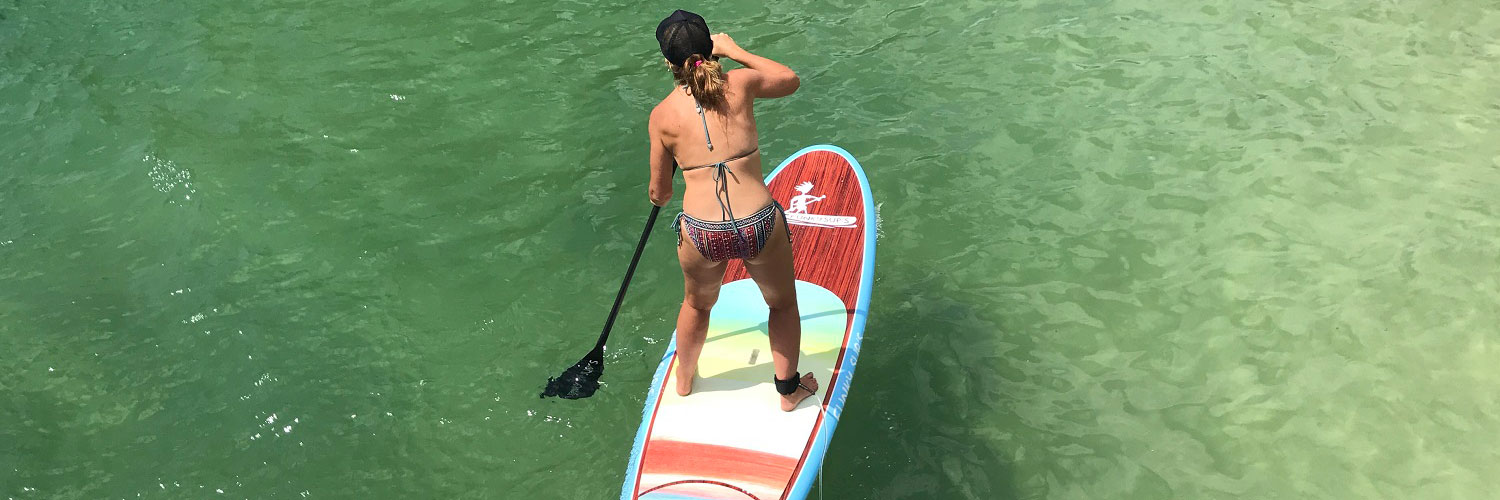
SUP Care Guide – Effective Cleaning & Maintenance
SUP Boards – Tips to Keep Your Paddleboard in Ideal Shape
Stand up Paddle Boards are an investment; so taking care of your SUP board is crucial to ensure it lasts for many years. Some of the harmful elements that could place your board in jeopardy are sunlight, heat and saltwater. By taking the following SUP cleaning tips into consideration, you will be well on your way to prevent these and other elements from harming your beloved paddleboard.
How to Properly Clean Your Paddle Board
After each use, it is vital to wash off your board in freshwater, and if you are planning to put it away for the season, make sure it is completely dry.
How to Adequately Protect Your SUP Boards from UV
The Sun
It is very important to respect your CMP board, the sun can be the most damaging element. Your board can be damaged if it has direct intense sunlight exposure. So protecting your board can ensure you will get a lifetime of paddling from your board. A popular belief is that it does not matter if the exposure is either short-term or long-term, this is not correct. The reason behind the damage is due to the board being structured of an EPS foam that holds air and gas that can easily expand, overheat, and add pressure to the fibreglass and epoxy skin.
You do not want this taking place. Using your board all day in the sun is fine, but then leaving it on the beach for a few hours afterwards in the heat is a problem. It is best to keep your board in the shade when not in use.
Why is the Sun so damaging? The internal component of your CMP board is foam which is made up of gas and air. When the gas is heated by the sun the nature of this is that it expands causing a pressure build up in the core of the board. In short terms if there is a large buildup of pressure then this can expand the core and cause the outer layer being the fibreglass shell to break from the core. This is what is known as delamination and is evident in boards that have air bubbles.
If you tend to leave your board outside, you should consider getting your hands on a board bag, one that has a reflective front. But please keep in mind that board covers can act as an oven and overheat a SUP board, so either leave the zipper open or look for a board cover with breather holes.
Air Vent
The regulation of the internal air pressure on a Stand up Paddleboard is very important as it allows the core of the board to breathe. If you don’t have a vent then your board is sure to have problems either in de-laminating or internal damage from water on the core.
All CMP SUP Boards have the Gore-Tex Vent Plug. This plug is used to keep the core (inside of the board) in a water and air tight environment. This vent is automatic so you don’t need to remove the plug. You can occasionally check to see if it is finger tight to ensure that the vent has not come loose. It is important you do not remove this plug or loosen this too much as this may damage your board.
How to Effectively Store Your Board
Every board should be stored in a cool, dry environment. When storage space is limited, a shed or a garage tends to be the go-to choice. However, you must make sure that the area is not too hot, for example never store a stand up paddle board in the top of a tin shed where it gets extremely hot.
Racks are always a great choice, Paddleboard Wall Storage Racks and SUP Ceiling Storage racks are two options to keep your board safe at all times and out of the way. This comes in handy if you do not have a lot of space. Keep in mind that you don’t store your board in direct sunlight.
Dings in Your SUP
A ding is a crack or depression in your board. There are a few types of dings that can occur while you are using your SUP. Some will not harm your board and are more cosmetic and others can cause serious harm to your board. Minor dings or scratches you can often repair yourself but big gauges in your board may require a professional to repair.
A depression in your board can be caused by regular use and often is not that harmful to your board. It is important just to try and handle your board with care and try and avoid running into hard surfaces at speed.
How to Safely Transport Your SUP
To transport your board safely, it should be secured with the aid of a roof rack system which can be a standard car crossbar or soft roof racks. SUP Boards should be face down with the fin at the rear of the vehicle and the fin upwards. Stand up Paddle boards can be multi-stacked on roof racks. The best way for tying on your paddleboard is to use two three-metre tie downs straps, remembering to not over tighten.
Summary of Caring for your SUP Boards
In summary you can protect your paddleboard by following simple guidelines:
- Do not remove the Gore-tex plug which automatically vents the gas and hot air building up inside your board
- Keep your board out of direct sunlight as much as possible
- Storage of your board plays an important part in protecting your board. Always store a board in a cool, dry area. Storage in a CMP board bag is great but avoid direct sunlight exposure.
- Repair any dings that have cracked the surface of the paddle board
- If you do hit something hard check your board immediately as you do not want water getting into the foam core
We are a stand up paddleboard specialist and welcome any questions on your SUP Boards. Contact us direct through our shop on the Central Coast of NSW or via our contact page.
Tags: Paddleboards, Sup Boards






















